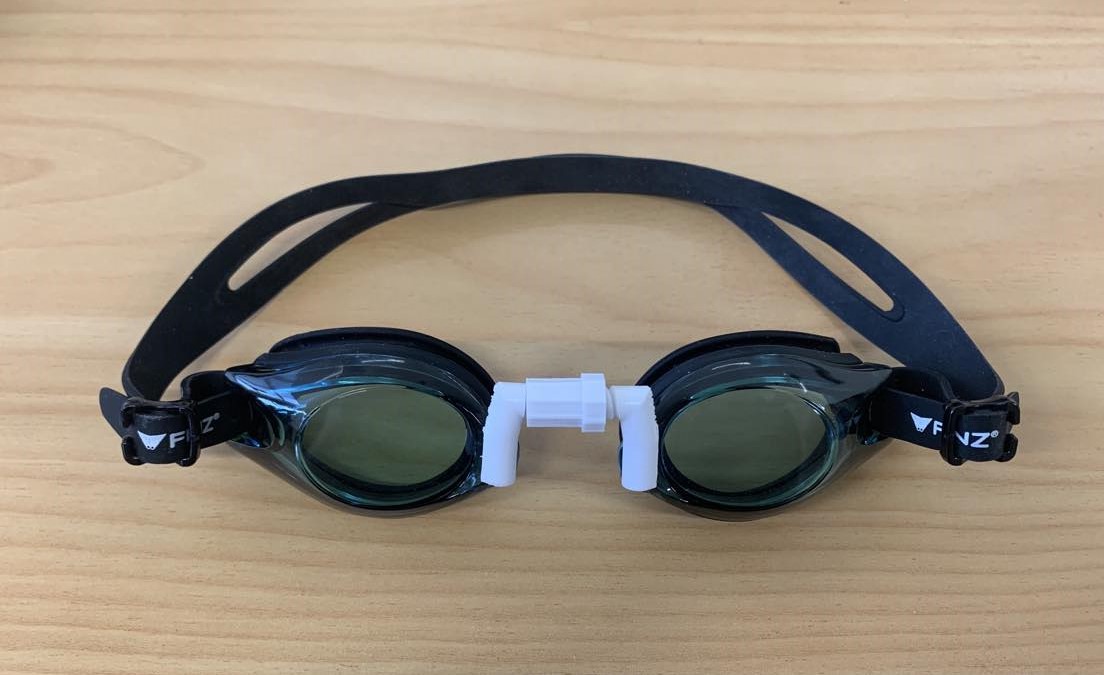Pierre Magadur from the French Polytech Angers Engineering School worked on an internship project at the University of Canterbury. His goal was to find a better solution for adjusting the nose bridge for swimming goggles. Somehow they never seem to fit perfectly. Some manufacturers supply 3-4 sizes while others use a simple string. Still, adjusting them to individual needs remains difficult.
Pierre designed a solution that can be fitted to any goggles. The prototype is a proof of concept and focuses on the mechanical solution. Here is a little video on how the design works:
The design consists of four parts that we 3D printed:
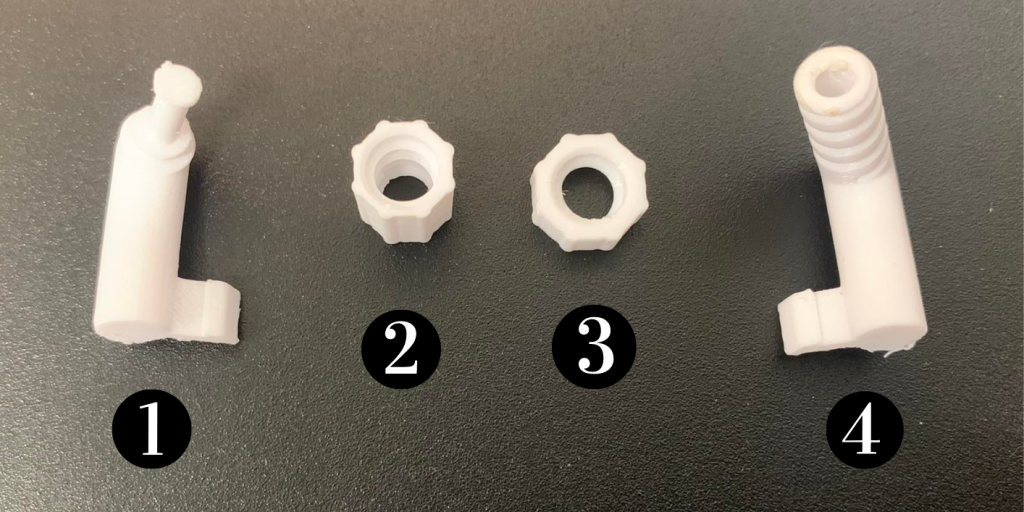
We have the two main parts which are at the ends (parts 1 and 4), They have a notch that fit into the holes of most goggles. Part 1 has two notches that will allow the other parts to be fitted together, the first of which will house the adjustment wheel (Part 2) so that it can rotate independently of the other parts, and the one at the end of the tube will allow parts 1 and 4 to be fitted together to make them inseparable while leaving some horizontal clearance to allow adjustment. The four parts can be assembled into a compact design:
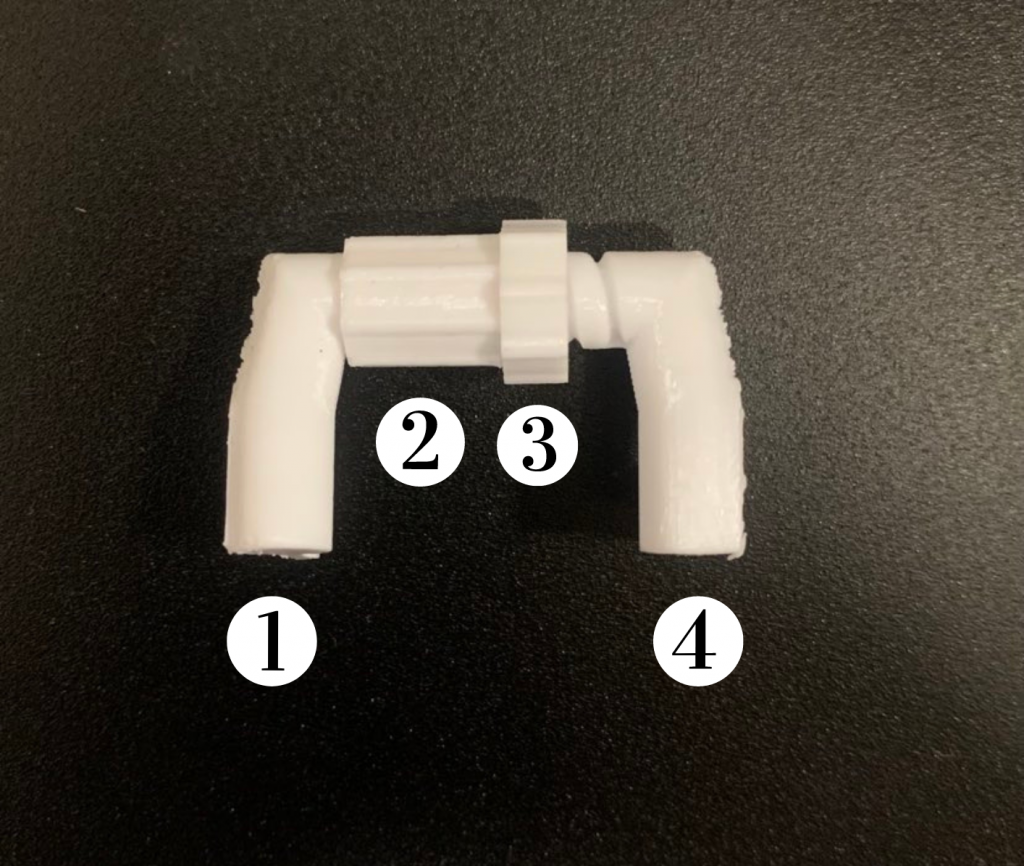
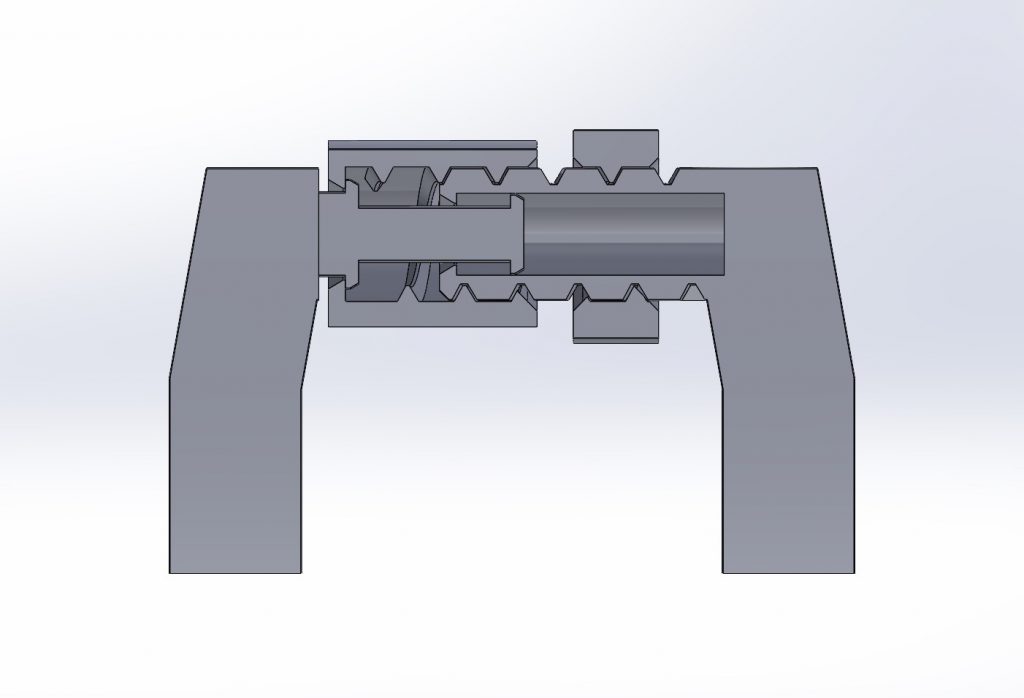
The screwing adjustment mechanism can be better understood by looking at the drawing that cuts through the nose bridge:
Part 4 has a hollow thread, the hole is used to accommodate the tube from part 1 mentioned above, and the thread is designed to work with that of the adjustment wheel (part 2) and the locking nut (part 3). Parts 2 and 3 are simple nuts with a pattern on the outside to make them easier for the user to grip. Part 2 is longer and has a design on one end that allows it to be fitted into the first notch of part 1. Their different diameters make them easier to distinguish when the pair is placed on the face.
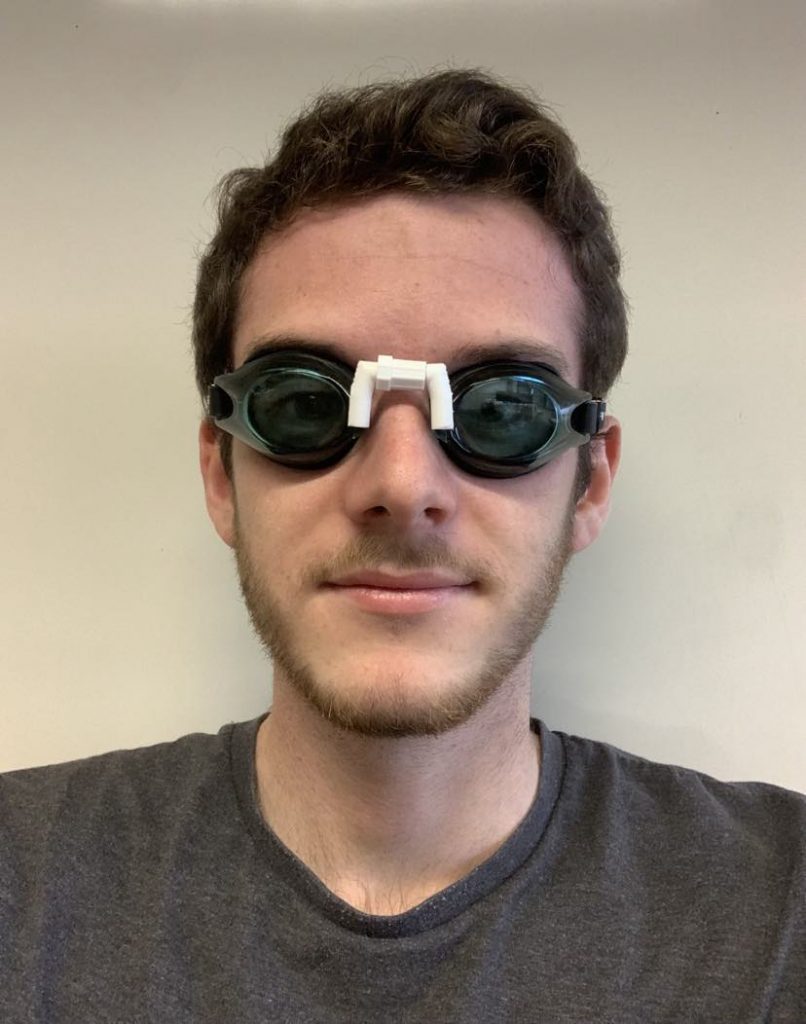
Their design is such that the bridge doesn’t get in the way of the user, so the bridge is above the nose and forehead so that it doesn’t encounter the user’s face. This way, the diversity of nose morphologies isn’t a problem for us, and it leaves enough space to handle the parts easily.
The design of the goggles is available as 3D files.

